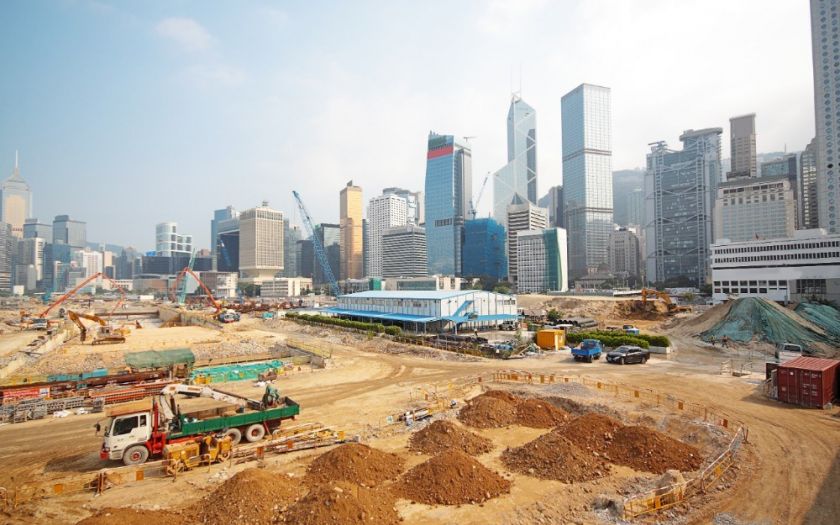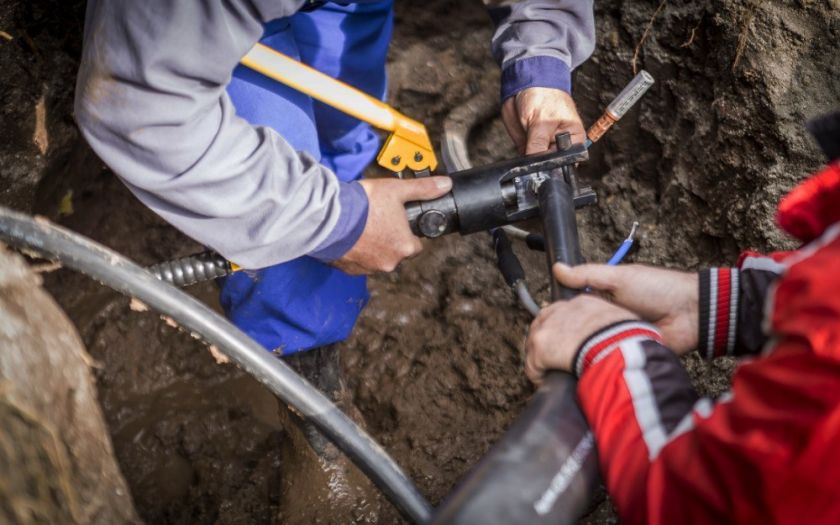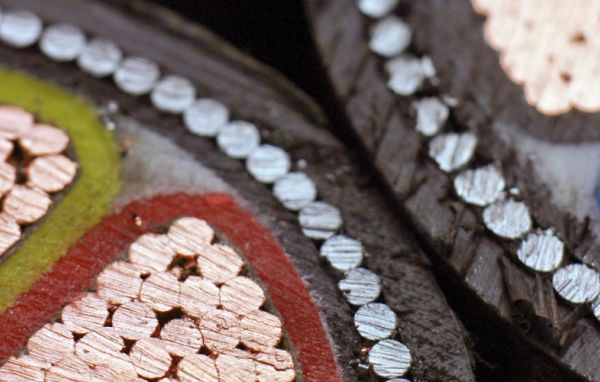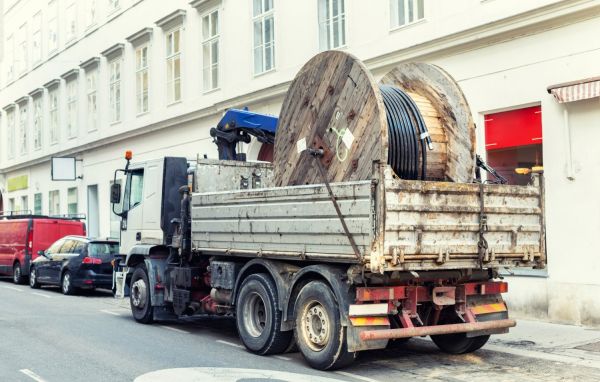Mitigating the lifetime environmental impact of cables
Over time, increased concern about the environment and its need for protection has led to more critical assessment of data and communication cabling systems in terms of both their fire risk and their impact on the environment. These concerns, which are interrelated, encompass the cables’ entire life, from original manufacture, through on-site operation, to end-of life disposal.
As manufacturers seek to mitigate the environmental impact of their products, they usually take one of two approaches: changing the materials used to manufacture cable products or modifying the processes used in production. This article will consider the impact of cable products and their materials on the environment, explore routes for improvement and discuss how cable products can be recycled at the end of their lifetime, as manufacturers look to demonstrate their commitment to reducing their environmental impact as a business.
Understanding the environmental impact of cable products
Specifying environmentally-friendly cable products at the start of a project would appear to be the easiest way to reduce environmental impact. However, as cable products are often manufactured using polymer compounds, used to achieve higher performance across a range of characteristics, the reduction of their environmental impacts is not always easy to achieve. Consideration should be given to the long-term impact cable products will have on the project because the product which may be best suited to an application today, could have a detrimental impact in the future.
All cable products will, in some shape or form, have an impact on the environment. Whilst cable products may not be directly responsible for damaging the environment, the products that power the industries, factories and offices that have a requirement for cables, contribute to factors such as air pollution and disruption to wildlife. Cable products can be found everywhere; they are installed all around us and used in applications such as the transmission of power and data. If cable products were not required for these uses, the impact to the environment would be reduced significantly. However, as cable products form an essential component of modern infrastructure, mitigating the impact they have on the environment is the best course of action.

Why mitigate environmental impacts of cable?
Cable is often given little attention after it has been installed, meaning it is often only revisited when the cable needs to be replaced or repaired. When this occurs, the practices employed may not be the most environmentally friendly. For example, data centres frequently install new cable products on top of old cable products, as this requires less labour and is more cost-efficient.
Mitigating environmental impacts is especially relevant for buildings and infrastructure which is required to operate continuously. Maintaining the quality of cable product becomes more challenging when services are required around the clock. Those responsible for specifying cabling products for facilities operating 24 hours a day should ensure that quality products have been installed. Selecting a product that is suitable for this application at the initial installation, will help to safeguard a project and reduce its likelihood of failure. This in turn will ensure downtime is avoided as the product is less likely to fail, and will also reduce the stresses placed on the environment if the cable product were to be pulled up or out, and disposed of.
The environmental impact of cable products used in any project should be a key consideration for project managers and specifiers. China’s Belt and Road initiative is one of the most ambitious construction projects in the world, yet it has also been labelled “the riskiest environmental project in history”. The initiative is planned to span across at least 64 nations by 2050, linking China to the Middle East, and could comprise of as many as 7,000 infrastructure projects. Whilst the initiative is likely to encourage economic growth across the regions, it will also have a significant impact on the environment. In the case of cable, the use of poor-quality products in these projects could result in materials degrading and breaking down, causing chemicals to leak into the soil. There is a high potential of damage to surrounding farmland, which could harm crops and have further negative impacts to the health of residents living in or eating the crop nearby.
This example shows that any construction project could have detrimental impacts on the environment and these should be assessed in relation to the surrounding population and managed accordingly. Whether the project is large or small, every effort should be taken to mitigate the impact of cable products on the environment.
Cable installations: Trading-off environmental impact against fire safety performance
The challenge for cable manufacturers when considering how to mitigate the impact that their products and manufacturing processes have on the environment, is balancing this requirement with the need for effective fire safety performance.
Many existing local and national regulations have cable installation specifications, which are governed by their fire performance ratings. Demonstrating effective fire safety performance is essential, because often these cable products are installed within close range of their end users.
The materials used in a cable’s construction will affect both electrical and fire safety performance. Simply replacing one material with another that offers better performance for one of these characteristics will not guarantee the whole cable will still perform as required.
Cable products are typically made up of a conductor, sheathing and insulation, while some products will also include bedding and steel armour wire. The cable’s conductor, bedding and steel armour wire can be recycled easily, however, the sheath and insulation material can present some issues.
The impacts of modified material
PVC has historically been used as the sheathing and insulation material for cable products. Not only is PVC easy to recycle but it also displays excellent durability and chemical resistance. However, PVC is well known to release thick smoke and corrosive gas when burned, which creates a serious risk to life and makes it unsuitable for installation in public spaces.
In order to ensure cable products demonstrate suitable fire resistance, whilst maintaining their mechanical performance, cable manufacturers have engineered new materials for sheathing and insulation. These materials include Low Smoke Halogen Free (LSHF), which gives off smaller volumes of smoke and gas when burned, and Cross-Linked Polyethylene (XLPE), which is often used for insulation in conjunction with LSHF. Cable products manufactured using these materials, are in turn safer to use in public spaces and in domestic environments. As materials such as XLPE are cross-linked, however, they are more difficult to recycle or dispose of at the end of their lifecycle.
Some cable manufacturers have experimented with sheathing materials, developed with biodegradable properties, in order to mitigate the impact of their products on the environment. Unfortunately, these materials can be less durable, as they are not yet established, when compared with traditional materials like PVC. Creating the potential for, once again, more frequent maintenance, replacement and further cause for disruption to the environment. Proving the quality of biodegradable materials right now is challenging, but one thing we can assume is that they will be less likely to meet industry recognised standards of traditional cable products.

Mitigation through modified manufacturing processes
Another approach that manufacturers may take to mitigate the impact of their products on the environment is to modify procedures used in the manufacturing process. Similar to how the modification of the materials used to construct a cable product can significantly impact on performance, this approach looks at how the overall impacts of the manufacturer’s production activities can reduce knock-on effects to the environment.
In order to reduce the overall impact of production activities, cable manufacturers must reduce their usage of resources such as water and energy. In addition to this, they must seek to reduce the amount of waste they produce and dispose of in landfill or other sensitive environments. In order to gain these reductions, significant investments by the manufacturer are required as they may need to purchase equipment and implement new systems in order to achieve these goals. The benefits, however, are a smaller carbon footprint, evidence of the manufacturer’s commitment to reducing the environmental impact of their business and cleaner, greener operating procedures.
Cable manufacturers can evidence their commitment to the environment through seeking and obtaining the ISO 14001 environmental management systems certification. BASEC offers certification to ISO 14001, which has been developed as an internationally recognised standard to provide guidance on how you consider the environmental impact of multiple aspects of your business. In addition, BASEC offers triple standard management system certification to encompass both the quality and health and safety systems. Manufacturers can, therefore, ensure their entire system is successfully integrated to reduce duplication of audit programmes and realise improved operational efficiencies.
Disposal and recycling of end-of-life cable
Another way that manufacturers can demonstrate their commitment to reducing their environmental impacts is to dispose of cable products responsibly.
In the UK and Europe, cable manufacturers are required to recover and dispose of electrical cables responsibly. The Waste Electrical and Electronic Equipment recycling (WEEE) Regulations request for them to provide proof of these activities.
If a manufacturer is unable to recycle or dispose of the cable products, the responsibility transfers to the “waste producer,” the person who has created the electrical waste, who must safely dispose of the cable. That is, if an electrical contractor were to remove old cable product and replace it with new cable product, they would become responsible for disposing of the old products.
This is especially relevant during building refurbishment or upgrades, as a large volume of scrap cable is usually generated when a cabling installation is stripped. This also presents a fire hazard and so, must be promptly removed from site.
Many leading contractors and consulting engineers around the country recognise the importance of removing abandoned cable offsite. Often highlighting the issue to the attention of their customer, particularly when new cable systems are being installed. In addition, some network and property managers now include the removal requirements on bids or lease contracts. The management of waste cable removal from sites, and the oversight of recycling this old cable, through lack of ownership in some part remains an unresolved issue in many buildings.
The copper components of cables, for example in copper communications cables, is one of the most commonly recovered and recycled materials. The large volume of plastic material, however, which is often used for the insulation and sheathing is often most likely disposed of by landfill or open incineration. Until recently few options existed for the recycling of plastic waste from communications cables.
Third-party testing and environmental performance
As explained above, simply modifying the materials used to manufacture cable products does not guarantee successful mitigation of the impact on the environment. In order to achieve this, cable products must be correctly specified, installed and disposed of. At the same time, cable manufacturers should also ensure their production processes and management systems are designed to reduce their overall environmental impact.
Whilst the fire safety performance of cable products is essential, varying cables designs offer different levels of performance and should therefore be specified accordingly. Equally as important, is a testing programme which comprehensively assesses the cable construction. Independent testing not only verifies the quality and safety of cable products, it also provides assurance that the impact of the cable installation on the environment will be low as a result of the way the materials used in the cable design perform over time.
Testing conducted by a third-party certification body assesses quality and safety in a range of environments. Whether the cable product must be installed indoors, outdoors, underground or underwater, testing to industry recognised standards verifies the way these cables will respond to environmental impacts so that material selections can be made in line with the end application. Product approvals provided by BASEC include testing for electrical, mechanical, material, chemical, fire and smoke performance to international, British, European and a range of customer-required local standards or industry-specific standards.
Cable manufacturers seeking to demonstrate their commitment to reducing their environmental impact should carefully consider how their activities can be modified to support this aim. Whether this is through updating existing processes or adopting new technology, manufacturers should seek to use the resources they have access to responsibly.
At the same time, specifiers should also consider the impact that the products they request have on the environment, as the installation of poor-quality cable products in projects can result in increased health and safety risks to both building residents and those living in the surrounding area.




